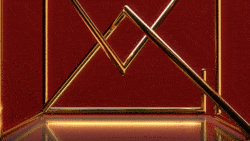What makes “IMANDRA” a fascinating case study in the world of explainer videos is not its intricately detailed but elegant animation (although that’s very nice), it’s the story behind its creation.
As small shops and individuals take on more direct-to-client work, there’s a lot to learn from how David Hobizal and Sissy Emmons Hobizal (a.k.a. First Mates) collaborated with their client, Aesthetic Integration, to craft a piece of content that goes beyond the conventional say-cow-see-cow approach to product launch videos.
We dove into the three-month process of making “IMANDRA” and turned up several insights that teams small and large will appreciate, with two key takeaways:
- Research and writing are every bit as important as design and animation.
- There are no shortcuts.
Making “IMANDRA” with David Hobizal and Sissy Emmons Hobizal
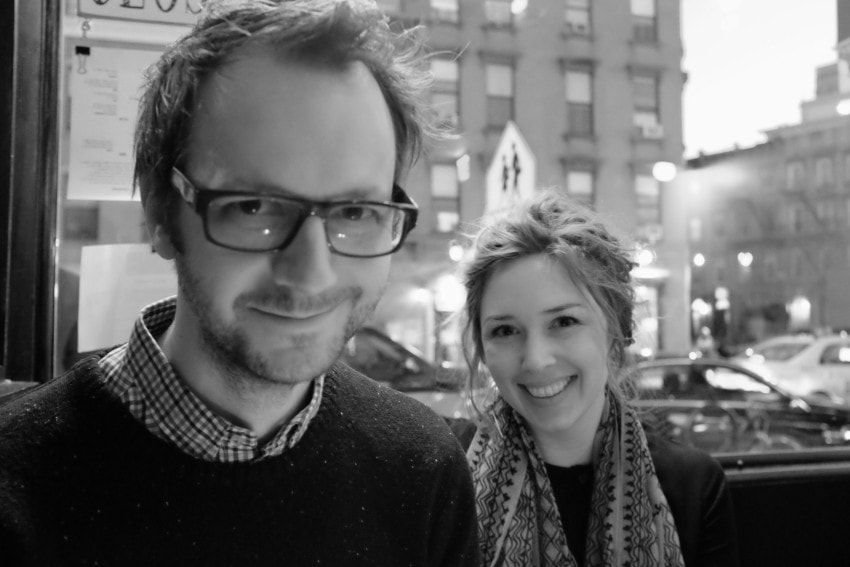
David Hobizal and Sissy Emmons Hobizal, a.k.a. First Mates (Photo by Christopher Palazzo)
When Aesthetic Integration came to you, there was no existing visual identity system. Design-wise, they were starting from scratch, right?
David+Sissy It’s hard to say design ever starts from scratch, but AI did bring us in as soon as they realized they needed some design “help” (which was very early because Grant and Denis are brilliant and knew they needed to start off on the right foot).
And through the process of asking questions and getting to know them, we helped kickstart the transformation of AI/IMANDRA from a product and passion into a brand.
David Even though I had direct access to Grant’s graduate and post-graduate papers (see: this, this and this), I had zero clue as to what he and Denis were up to when they officially announced the formation of Aesthetic Integration. (High end fashion company?)
So when they called needing some design help, the questions naturally started flowing.
What kind of help were they specifically asking for?
David+Sissy Formally, they needed the whole package: business cards, PowerPoint templates (even though we don’t do those), white paper templates, email signatures — you name it.
You guys pitched just one concept to them, correct? Why was that?
Sissy Why one concept—well, we don’t always show just one, but it’s incredible when we can. And in this case, AI trusted us and wanted us to show them an elegant solution.
We didn’t want to push the burden of evaluation and choice back on them. It’s a lot harder to evaluate your own work and be confident in a single solution than it is to just throw 50 ideas out and make the client decide.
That’s interesting. Pitching one concept intuitively sounds like less work, but you’re saying it’s more difficult?
I think about branding like sculpting a portrait—it’s inherently a subtractive process where you chip away at what you know it’s not. If you’re listening intently and focusing your attention on what it is that makes a brand truly unique, a fairly clear picture will start to form.
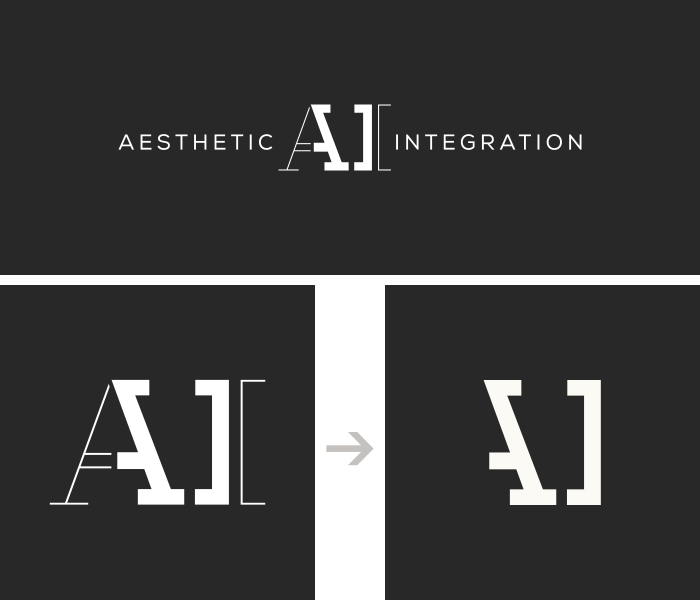
Development of the Aesthetic Integration logo
The branding process also nicely mirrors the mathematical way AI solves its own questions — not a basic 1+1=2 kind of obviousness, but rather it’s about finding the most elegant solution. Though there may be multiple paths to the correct answer, you’re always looking for the solution that solves the question in the simplest and most ecstatic way.
AI is not an easy company to understand. How did you start?
We did a lot of research and listening before we ever put pencil to paper. Our first presentation to AI was us presenting back to AI our understanding of who they are and how they see themselves.
So by the time we got to actually drawing, we had a pretty firm grasp on what the design would need to deliver in order to be successful. (It had to be sexy.) As we sketched and talked and gathered inspiration and sketched some more, a single solution began to rise to the top.
Moving into pre-production
With AI’s identity taking shape, you guys moved onto the writing phase for the IMANDRA product launch video. Considering the intense math and computer science involved in the product, how did you guys wrap your head around the script?
The script started as a single dense page, wonderfully written but in a Socratic voice. Our first goal was to understand the content enough so that we could begin the process of reshaping an explanation into a script.
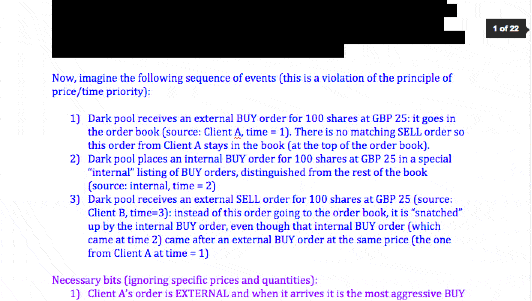
A redacted version of the full 23-page script
It was this attempt to brain dump 15 years of combined high-level math and finance over the course of a 3-week post-doc master class (through voice and video calls), that expanded the script from a dense 1-pager into 23 insanely hyperlinked pages.
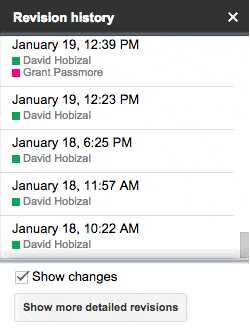
The Google Doc revision history for the IMANDRA script
You guys are based in New York, but AI are in London. Did that prove problematic?
The US/UK time difference really worked in both of our favors. We were all able to be very efficient with our time.
Working when they were winding down, we could send questions and requests, or send roughs for feedback at the end of our day. By the morning, we’d have the information and content, plus a catch up session so we could keep rolling.
We operated at both of our best times of the day. (We’re morning people.)
You’ve known AI co-founder Grant Olney Passmore for a long time. Any advice on working with friends on paid gigs?
Short answer: Getting to work with friends is the best. You get each other’s back.
At the same time, because it’s more than just buds being buds, you’ve gotta stay pro so you don’t show up in your underwear to a board meeting. There’s always the fear when working with friends that you could get too loose and that people on both sides might take too many liberties — or be too demanding and thus damage that happy friendly stuff.
But we held each other to levels of complete transparency 100% of the time. It sounds idealistic, but in this case, it was how it worked out.
Internally, how did you break down the workload between the two of you?
Sissy Honestly, it was a bit messy at the beginning. The timeline was tight and there was a lot to digest, so we became co-creators very quickly; script editing, storyboarding, moodboarding, some style frames.
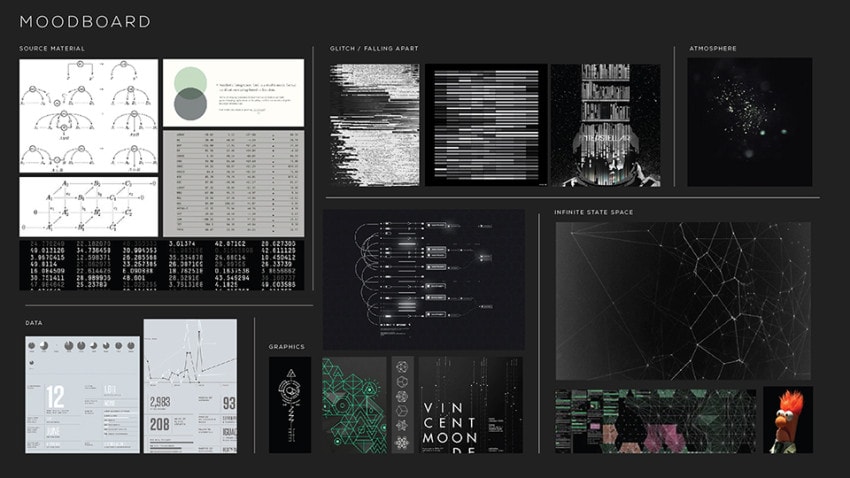
Moodboard for IMANDRA
But as the project started to take shape, we had to get to business. I took to making the art while David animated and directed the music and voiceover (with brother Eddy, and David Pulkingham respectively).
David+Sissy We became as one. While technically Sissy drew and David animated, we were both helping each other figure out how to get the best ideas across, so it was a lot of standing behind each other asking, “What if looked like this?” and “Ok well, what if it moved like this?”
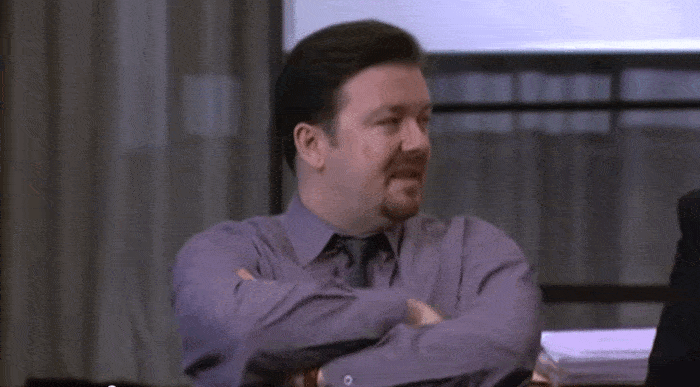
So all the audio was done remotely?
DAVID We commissioned my brother Eddy [Hobizal] to write the music and engineer the voice over session in Texas via Skype. He killed it, as he loves to do.
How long did it take to find your rhythm as a team?
Sissy Collaborating on the art direction was pretty fluid once we nailed down the look and aesthetic language.
We got into the rhythm of me designing/drawing at night or early in the morning — discussing how it was meant to animate and move over coffee before I ran to the train for work, then David would animate during the day, I’d come home, we’d watch it together, and I would give him my feedback/suggestions and then draw some more while he continued to animate.
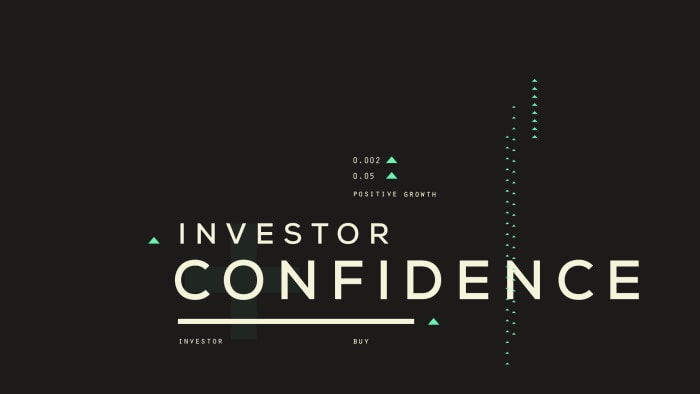
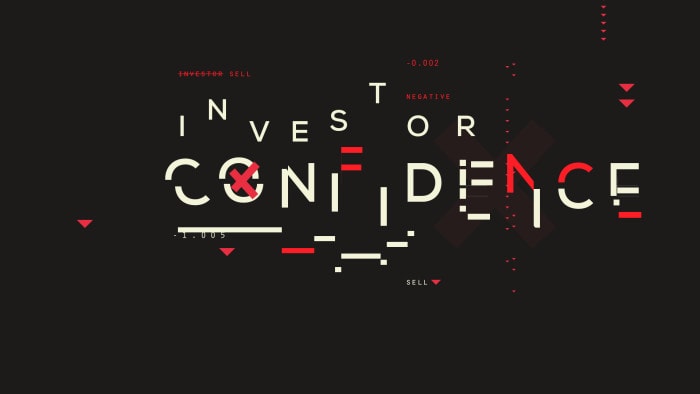
Style frames illustrating crumbling investor confidence
Did being married making it easier or harder to work together?
David Luckily, we had most of our meltdowns five years ago when we first started working together (chuckle chuckle), and while those sometimes tried to resurface, we’ve learned to deal with them faster. The strain from the added pressure of Sissy’s full-time job was something we were both aware of and worked at minimizing.
This project was my sole focus, and I had to work at balancing the momentum of the project that I’d built throughout the day, with knowing I needed to pause when Sissy got home so I didn’t stress her out.
Sissy There were simply fewer hours I could devote to drawing, which meant those hours really needed to count. There were many weeknights that we had counted on me drawing, but I would get home after a long day, and I was just too wiped out to make it happen.
Instead, we would talk about what needed to be done and I would go to sleep and get up at the crack of dawn to draw for a few hours, or we would rearrange our production schedule so that I could draw just on the weekends.
For part of the project, David, you rented a desk in DUMBO instead of working at home. Why was that?
It gave us the room to have a living space again — and to have mental and physical separation from our work. We could also make tacos without fear of spilling salsa on my NAS.
Diving into the design process
What was the underlying goal, the driving force of your design process?
We wanted to create a video that could be a proxy for the incredibly elegant and clear communication style of the AI founders, a video that showed how IMANDRA takes something so complex and chaotic and unpredictable and makes it clean and simple and safe.
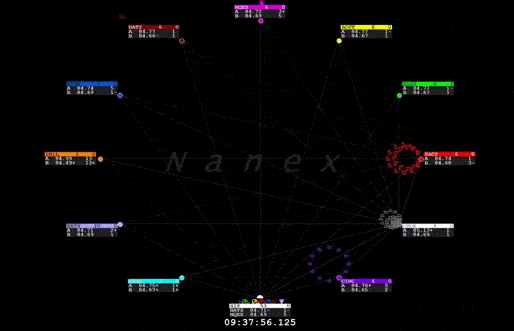
One half-second of trading a single stock carried out by automated trading systems. IMANDRA seeks to improve regulation of this sort of trading. (Source: https://youtu.be/rB5jJuMP84E)
What were some of the grammatical structures you developed for your visual language?
We tried to keep a single idea as the driving concept behind every design decision we made, everything we did whether it be graphics or movement or music had to reflect the idea of moving from complex to simple, dangerous to safe.
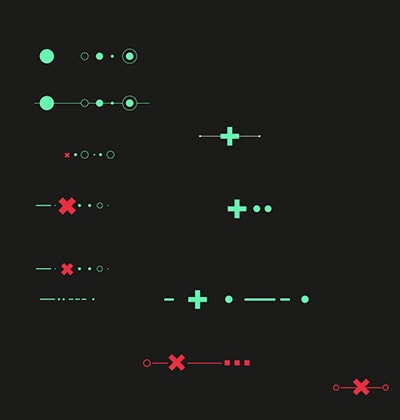
That idea led us to the motifs we used to develop a symbolic language represented through the colors red and green, and the symbols “x” and “+.”
How did you settle on red and green?
The color palette came about as a way to visualize our driving idea dangerous to safe, negative to positive.
Aesthetic Integration’s color palette is already black and cream with a hint of green. Green because it is the color of intelligence, the color of harmony and nature, it is the color of yes, of calm, of go—and that’s what IMANDRA does. It is the harmony, it is the green light.
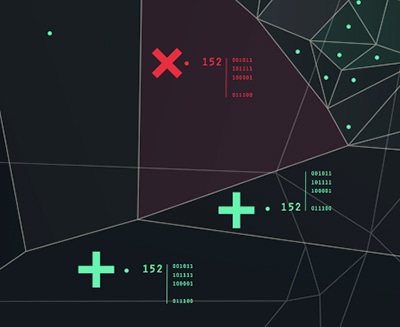
So what better way to show that duality than with its opposite: red—the color of no, the color of stop the color of danger. We talked many times about adding another color to break up the “Christmas,” but in the end there just wasn’t a strong conceptual reason to throw in another color. It would break our graphic language.
What about the symbology used throughout the project?
The symbols came about early on as we were creating small graphics for the “infinite state space” section of the video. We wanted to show clearly from a distance some things being positive and some things being negative.
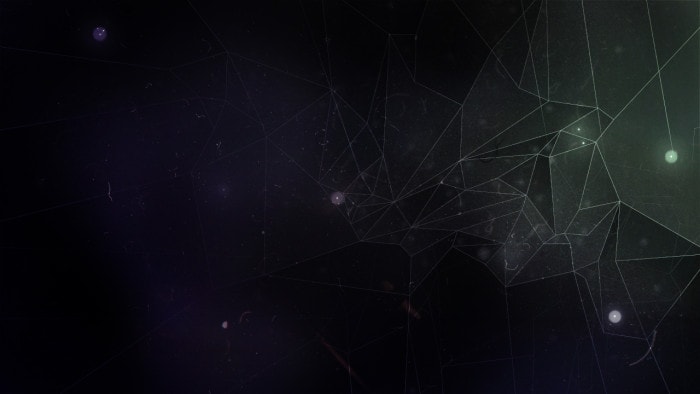
Initial style frame for infinite state space concept
We had been playing around with the plus sign for IMANDRA because it is such a beautiful graphic form that is instantly associated with positivity. It’s also a great mathematical symbol, so it seemed like the logical choice for a company founded by two brilliant mathematical thinkers.
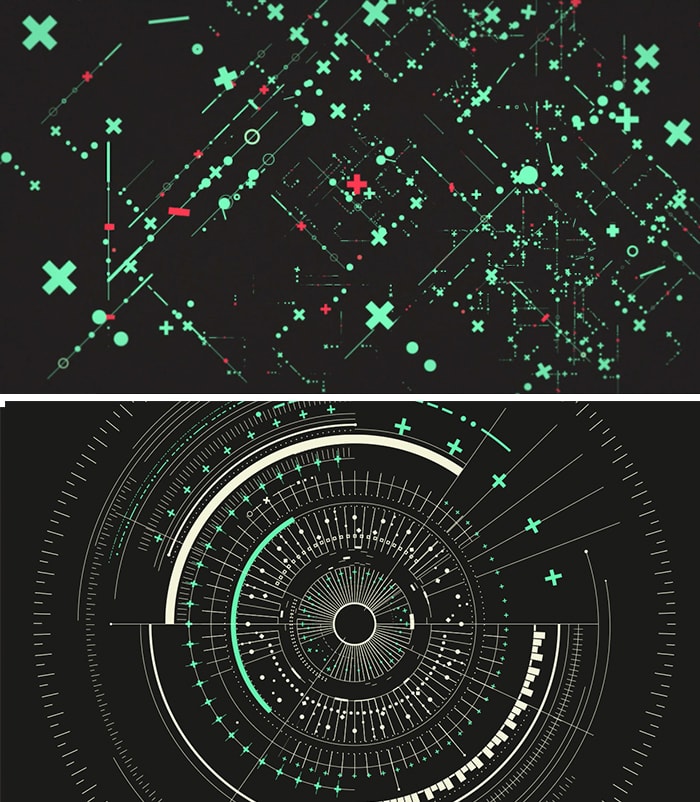
The “+” and “x” language in action
We went with an “x” rather than a minus-symbol, because there is something so elegant in using the same shape to be both positive and negative—all you have to do is rotate it 45 degrees.
Do you think that having such a limited shape palette helped you guys along?
After we had established the +/x symbology we were able to then build with them—code is 0’s and 1’s, so why not symbolize that with +/x?
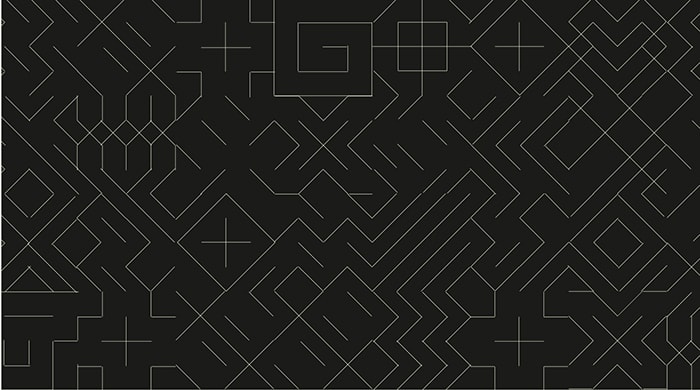
Having a limited shape palette is a great way of keeping the design tight and the video consistent. It also freed us up to really think about composition and pattern as a way of communicating the various related concepts.
How did you decide on your typographical system?
We use NEXA in the AI system, and it also worked great for the logo and the headline fonts—so clean and geometric – it fit right into the symbol system. We also used Orator for a lot of the more infographic typography as it so beautifully queues data systems.
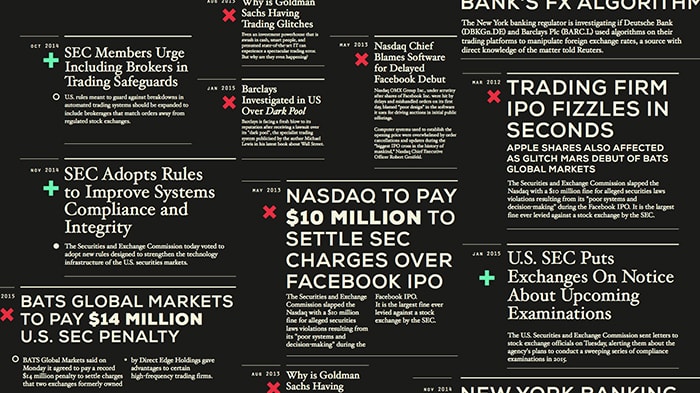
A still exemplifying the IMANDRA typographical system
And finally, a lot of our secondary typography was set in Hoefler Text. It’s elegant, classic — and serif typography really is the language of financial and mathematical seriousness. It also did a great job of adding much needed human texture to a very graphic and symbolic piece.
Describe your approach to the animation process.
We followed a traditional script > moodboard > board-o-matic process and developed a really tight animatic, but as our depth of understanding the content continued to increase, we realized that we had made the video too tight, and there wasn’t enough time to visualize some of the more complex ideas.
So we ended up going back to a longer version of the script to give ourselves time.
It made us nervous at first, because we’re used to having everything in its place before animating, but in this case, it was sort of freeing to know we could try and fail and start over. With just the two of us we could be nimble without the cost of having a whole team sitting on their hands.
Animation breakdown
A “behind-the-keyframes” style breakdown of the investor confidence sequence showing just the bounding boxes in After Effects.
Anatomy of a grid
Despite its code-inspired aesthetic, the grid animation at the end of the video required a lot of hand-wrought animation.
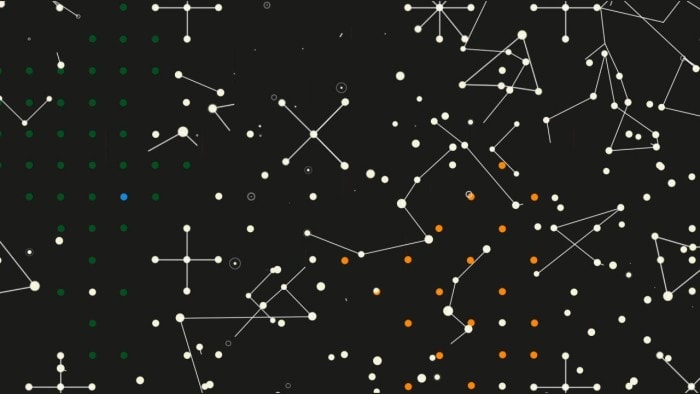
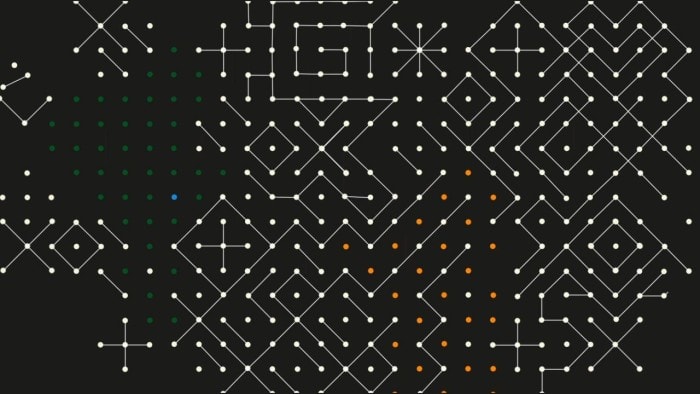
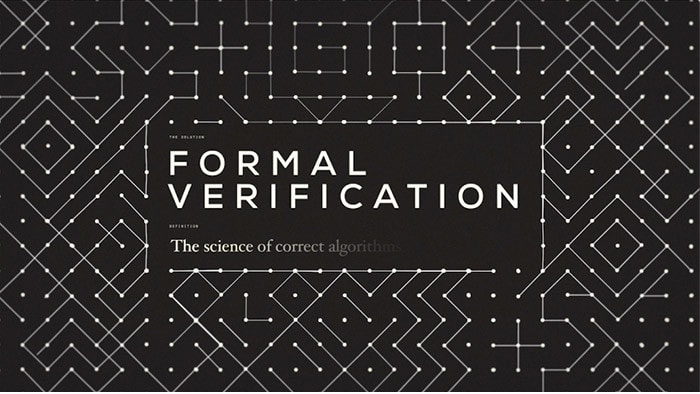
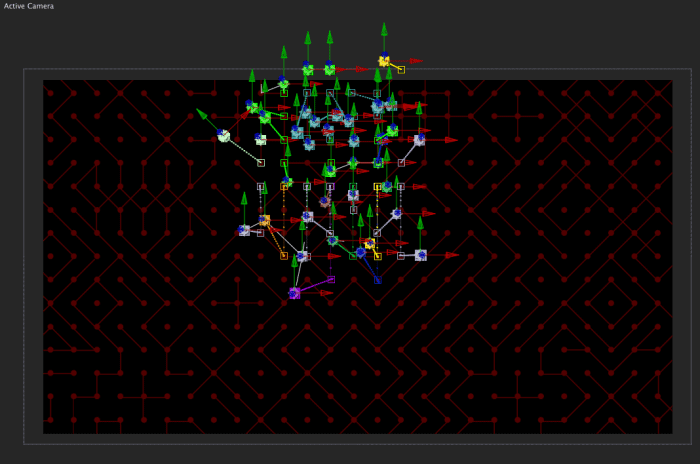
After Effects screen cap of the grid precomp
And the timeline…
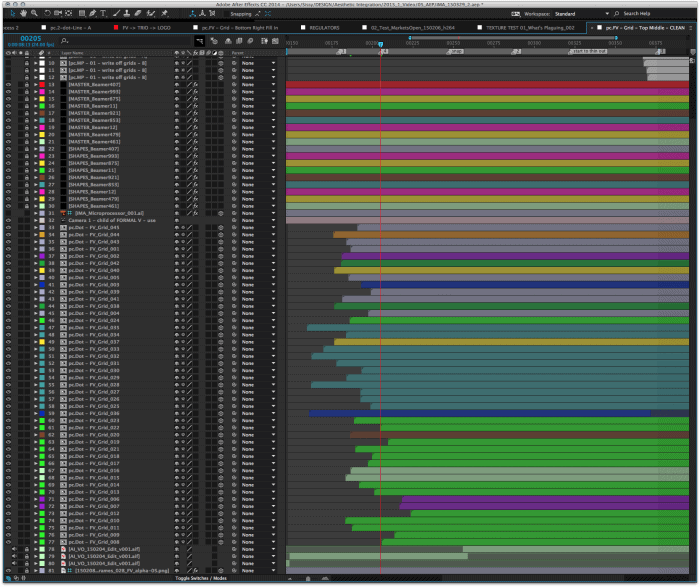
No fancy scripting here, just a lot of brute force keyframing
Epilogue
Now that it’s over, how do you feel about the project?
We were hired to create a video with some very real and quantifiable goals for two opposite groups.
The video is used by Aesthetic Integration as an introduction to bring audiences up to speed on (1) how financial algorithms work, (2) why that’s important and problematic, (3) what Formal Verification is and therefore (4) why IMANDRA is so valuable.
The video has to communicate these ideas to both audiences who have no financial/maths background and those who have a great depth of knowledge in the field. It had to be approachable and simple enough for a lay audience, but couldn’t over-simplify and lose the respect of those in the industry.
How was the piece received?
In addition to a positive reception from AI’s immediate audience, it’s been really excellent to see that our peers who aren’t knee deep in the financial world have found the video compelling and exciting.
That’s the dream, to do work that is both functional and artistically rewarding without sacrificing either in service of the other.
What’s next for First Mates and/or for each of you individually?
David+Sissy Find some new projects!
David I can’t quit messing with these 11 weird songs I started with [my brother] Eddy until they’re done, so just working on getting those finished and remembering to have fun with it.
Sissy I’m a senior designer at Pearlfisher, so my days are filled with branding and packaging design. I love the company, and I’m super passionate about bringing brands to life. I also love making stories come to life through motion with David—which is it’s own thing.
You’re working on a children’s story project, right? How’s that going?
Sissy This is a project I’ve been kicking around for a long time—and it keeps evolving. I’d like to marry all of my passions in a single project: whales, science education, illustration, young feminism and interactive storytelling while also mashing up my two favorite book genres: densely illustrated storybooks and DK Eyewitness science books.
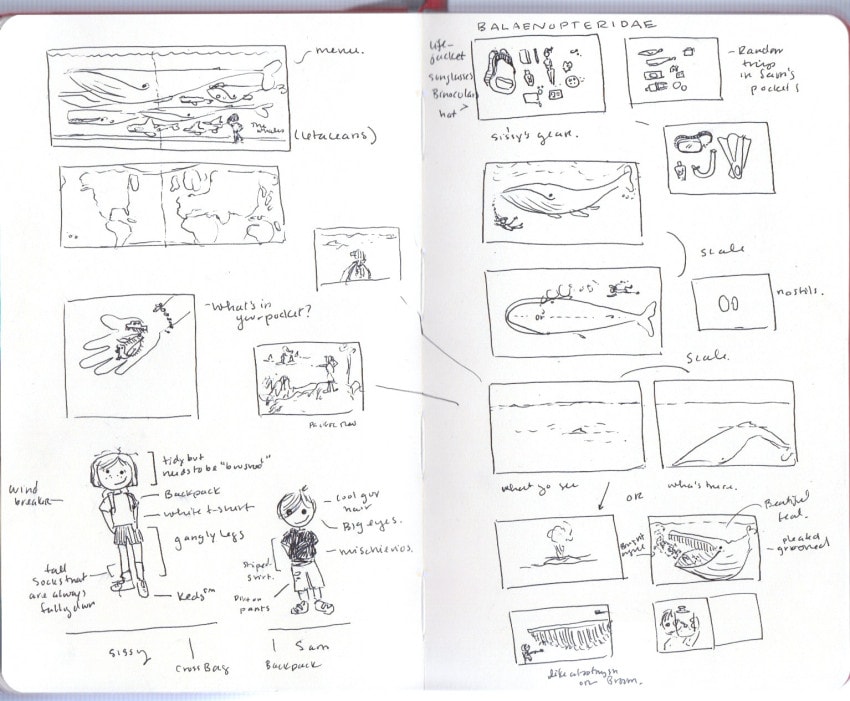
The manuscript requires several more rewrites, so in the meantime, David and I are making a short narrative film based on the main character, Meri.


